UGREEN has an extensive portfolio of charging products and docking stations, and the brand broke into the storage segment last year, debuting its NASync series. I tested the DXP 4800 Plus and the SSD-only DXP480T Plus back when they launched, and it was immediately clear that UGREEN is delivering the best hardware of any brand in this category.
That’s the case with the DXP2800 as well, UGREEN’s 2-bay solution. The NAS is powered by Intel’s N100 platform, has 8GB of memory, and 2.5 Gigabit Ethernet connectivity. You also get dual M.2 slots, USB-C and USB-A connectivity, and an HDMI port. UGREEN put a lot of thought into the design and hardware, and while the brand’s software was barebones at launch, that has changed considerably over the course of the last 12 months.

So, if you want a new 2-bay NAS and need something with plenty of power, here’s why the DXP2800 may just be the best choice available right now.
UGREEN DXP2800: Pricing and availability
(Image credit: Harish Jonnalagadda / Android Central)
UGREEN unveiled the DXP2800 in Q1 2024, and the NAS is now available globally. It costs $349 on UGREEN’s website, and you can bring it down to $314 by using code DXP2800. It’s also available on Amazon for $314 when you use the code on the listing page.
If you need additional drive bays, there’s a 4-bay model dubbed the DXP4800, and it is available for $495 as of writing.
UGREEN DXP2800: Design

(Image credit: Harish Jonnalagadda / Android Central)
Most 2-bay NAS servers have a plastic chassis, but UGREEN clearly paid a lot of attention to the design, and the chassis of the DXP2800 is made entirely out of aluminum alloy. The metal construction gives the NAS a sizeable heft, and it is the heaviest 2-bay server I used in recent years.

(Image credit: Harish Jonnalagadda / Android Central)
Weight obviously isn’t a consideration with these things, but the build quality of the DXP2800 is easily the best in this category, and there are no issues with the design. The dark grey color scheme makes the NAS unassuming, and it does a decent enough job blending into the background. You don’t get much in the way of branding either; there’s a UGREEN logo on the sides, but the black text is barely visible against the grey color.
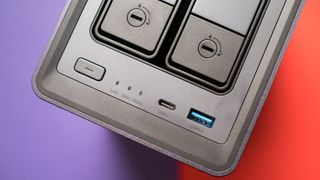
(Image credit: Harish Jonnalagadda / Android Central)
The NAS is taller and wider than the DiskStation DS224+, so you need to take that into account if you’re slotting it into an entertainment cabinet. There are the usual status indicators at the front, the power button is located next to the LEDs, and what I like is that there’s a USB-C port alongside the usual USB-A connectivity.
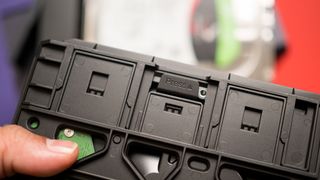
(Image credit: Harish Jonnalagadda / Android Central)
The drive bays are numbered, and they’re individually lockable. Another positive with the design is that UGREEN has an ingenious tool-less system to slot in 3.5-inch drives, and it is the easiest of any NAS server I used. There’s a solitary 90mm fan at the back, and it has a magnetic dust filter that ensures it doesn’t get too much in the way of dust.
If anything, the design does a great job minimizing dust. I have to clean my other NAS servers every three months of so because of the sheer amount of dust that gets accumulated, but that just hasn’t been a problem with the DXP2800.
UGREEN DXP2800: Ports and connectivity
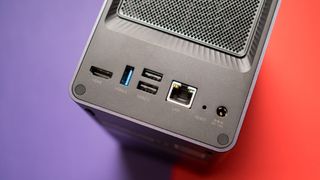
(Image credit: Harish Jonnalagadda / Android Central)
UGREEN did a good job with connectivity, and the DXP2800 has 2.5 Gigabit Ethernet at the back. While that’s great by itself, I would have liked to see two ports at the back — ASUSTOR’s AS5402T and TerraMaster F2-424 include dual 2.5GbE connectivity, and the DXP2800 is on the backfoot in that regard.
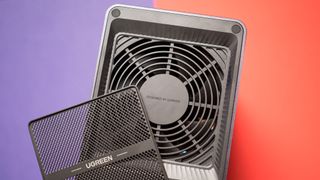
(Image credit: Harish Jonnalagadda / Android Central)
Still, the solitary 2.5 Gigabit port should be adequate for most users eyeing this NAS. You also get HDMI out, dual USB 2.0 ports, two USB 3.2 ports — one at the back and the other located up front — and USB-C connectivity, so you can easily connect external drives to the NAS and transfer data over.
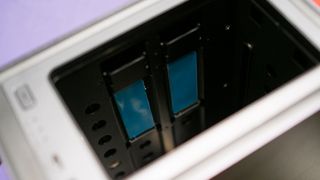
(Image credit: Harish Jonnalagadda / Android Central)
The NAS has a built-in 32GB eMMC module that has the UGOS software installed, and each of the drive bays accommodates drives up to 24TB each. There are two M.2 2280 slots inside the chassis (located next to the drive bays), and you can technically add 8TB SSDs in each slot, bringing the total addressable storage to 64TB.
There’s 8GB of DDR5 memory installed out of the box, and you can easily switch the modules if you need additional memory. The SO-DIMM slots are located on the underside, and they’re easily accessible.
UGREEN DXP2800: Performance

(Image credit: Harish Jonnalagadda / Android Central)
The DXP2800 has the best hardware in its class, and Intel’s N100 platform is noticeably better than the Celeron J-series products that have been a mainstay in this category over the last decade. It has hardware transcoding, and doesn’t consume as much power as its predecessor — something that makes a difference on a device that’s powered on 24/7.
UGREEN’s UGOS Pro software is much better in 2025, and the web-based OS has similarities to DiskStation Manager, so if you’re migrating from a Synology NAS, you shouldn’t have any issues. You get the usual network configuration options, and there’s two-factor authentication to safeguard your account. UGREEN has a remote access service as well, but you should just use Tailscale to connect to the NAS when you’re away from your home network.

(Image credit: Android Central)
UGREEN’s UGOS Pro software is much better in 2025, and the web-based OS has similarities to DiskStation Manager, so if you’re migrating from a Synology NAS, you shouldn’t have any issues. You get the usual network configuration options, and there’s two-factor authentication to safeguard your account. UGREEN has a remote access service as well, but you should just use Tailscale to connect to the NAS when you’re away from your home network.
You get native clients to manage photos, videos, and music, and there’s the option to spin up a VM too. That said, you don’t get any productivity utilities, and this is an area that UGREEN needs to address. Similarly, there’s no Plex client but Docker lets you easily install Plex as a container, and it runs just as well as a native client.
I set up the DXP2800 as my main NAS, and transferring data over 2.5GbE was in line with other NAS servers I tested recently. There are no problems in this area, and I didn’t see any issues with Plex or streaming content to other devices in general.
Hardware transcoding is efficient, and you will need a Plex Pass to utilize transcodes; it’s worth getting one if you have a large media library and cast to older devices.
Mobile connectivity is decent as well, and you can easily back up photos and videos on your phone to the NAS. The best part is that you can install TrueNAS or any other OS of your choosing if you want to switch. This extensibility makes the DXP2800 a particularly great choice as you’re not tied to one OS.
UGREEN DXP2800: The competition
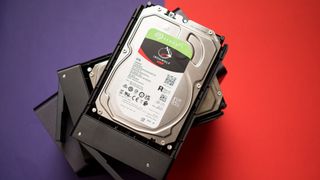
(Image credit: Harish Jonnalagadda / Android Central)
If you’re interested in the DXP2800 but need dual Ethernet ports, TerraMaster’s F2-424 is the ideal option to consider. This 2-bay NAS also has great hardware, and is powered by Intel’s N95 platform. I like what TerraMaster is doing with its TOS 6 software, but you also get the option to use TrueNAS. Coming in at $379the F4-424 is costlier than the DXP2800, but you get arguably better software and dual 2.5GbE connectivity.
UGREEN DXP2800: Should you buy it?
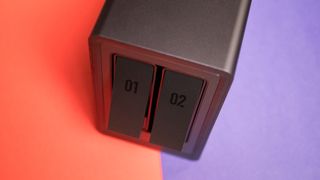
(Image credit: Harish Jonnalagadda / Android Central)
You should buy this if:
You want a powerful 2-bay NAS serverYou need 2.5 Gigabit connectivityYou want a NAS that’s built to lastYou want to install TrueNAS on your NAS
You shouldn’t buy this if:
You need a NAS with the best valueYou want plenty of software utilities pre-installed
While I traditionally suggested the DiskStation DS224+ as the default choice if you need a 2-bay NAS, the DXP2800’s hardware combined with software potential and extensibility make it an easier recommendation. UGREEN did a better job with the build quality, the N100 platform is among the best in this category, and you get hardware transcoding as well.
There are no issues with the NAS in daily use, and it does a great job with the essentials — backing up data from phones and other devices, file transfers, and accessing your data from anywhere. I would have liked to see additional software utilities pre-installed, but that will come later this year, and with Docker integration, you can install everything you need. Plex runs well on this NAS, and if you have Plex Pass, you can leverage hardware transcoding.
Ultimately, the build quality and hardware give the DXP2800 an advantage, and the UGOS software is decent enough that it’s no longer a limitation. The pricing is on the higher end of the scale, but you’re getting one of the best home NAS servers around.
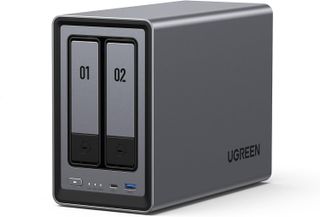
With the powerful Intel N100 hardware and possibly the best build quality in its category, the DXP2800 nails the basics. The software is much better than last year, and when you add in all the other features, you’re getting one of the best 2-bay NAS packages around.





GIPHY App Key not set. Please check settings